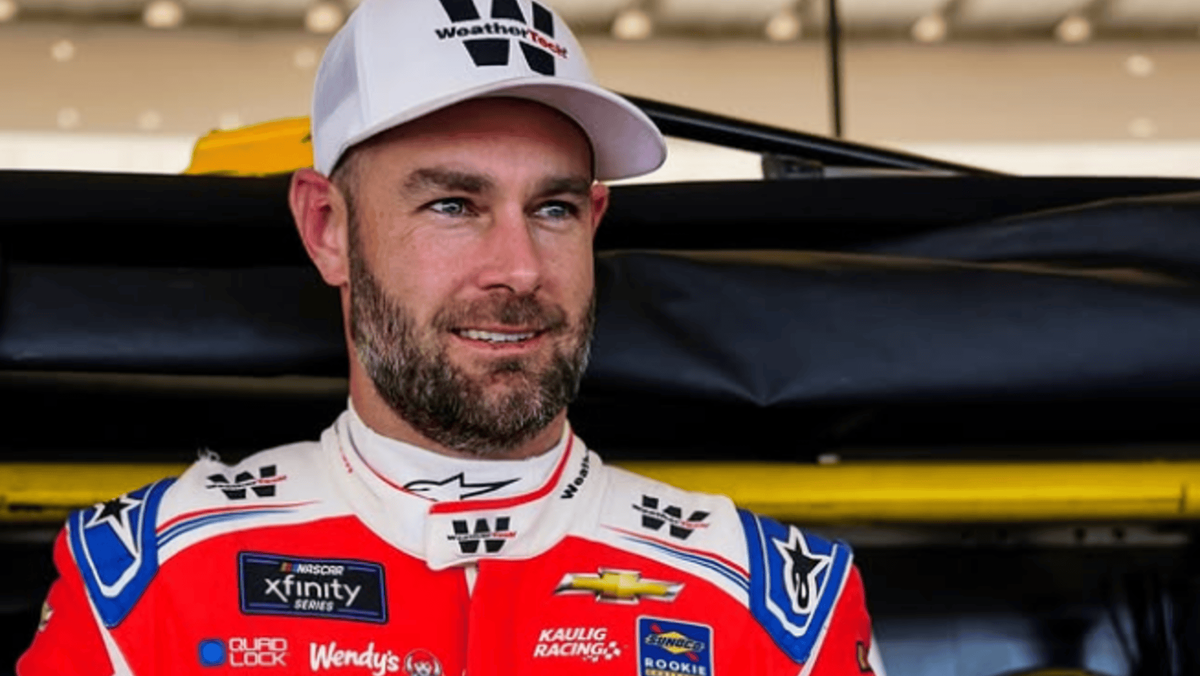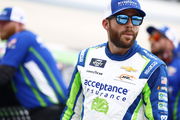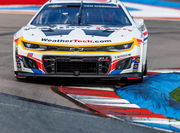

“This place has changed my life, so I’m gonna have special memories of this place forever,” Shane van Gisbergen recently said about his electrifying win at the inaugural Chicago Street Race in 2023. That breakthrough moment didn’t just win hearts, it opened doors. Van Gisbergen, better known as SVG, used that victory to leap from international touring car fame into NASCAR’s national spotlight.
Watch What’s Trending Now!
Fast forward to 2025, and he’s now a Cup Series winner with a playoff berth in hand. Returning to Chicago, where it all began for him in stock car racing, SVG is carrying confidence, experience, and a little flexibility. With a win already under his belt this season, the 36-year-old is finally in a position many drivers crave: the freedom to experiment. But how much will he risk in a race that means so much to his story?
ADVERTISEMENT
Shane van Gisbergen eyes strategic tweaks after triumph
With a win already secured this season, Shane van Gisbergen has found himself in a rare and enviable position for the Chicago Street Race: The freedom to experiment. “We did that at Mexico. And we’ll continue to make it better here,” SVG explained. Well, the Mexico experiment proved fruitful as SVG powered to a historic 16.56-second win over Christopher Bell at the Viva Mexico 250.
SVG and his team took calculated risks with car setup and pit strategy, ultimately powering to a dominant victory that locked in their playoff berth. This flexibility is especially valuable for Shane van Gisbergen, who admits there are still issues with driving in NASCAR, “There’s some feelings I’ve struggled with in the car the last couple of years.” The numbers don’t lie. Just take a look at last year’s stats. In 12 races, SVG managed just one top-5 and had an average start and finish position in the 20s. This year, too, he has had similar results.
Shane van Gisbergen also touched on how the playoff format and stage racing influence strategy: “If we’re in a position to get a playoff point, we’ll probably try and get that and but that’ll put us in deep in the field for the next stage. So, yeah, there’s a bit of a toss-up there, what we’re going to do.”
ADVERTISEMENT
SVG said they might stay out for a playoff point in winning a stage and then have to work their way through the field if not great track position for start of ensuing stage.
— Bob Pockrass (@bobpockrass) July 4, 2025
Well, the introduction of stages has transformed race tactics, especially on road courses. Teams often face a choice. Short-pit before a stage ends to gain track position for the next run and hopefully collect points in it, in turn, sacrificing valuable stage points in the current stage. Or stay out to collect points and risk restarting further back. SVG is thinking of the latter for Chicago.
ADVERTISEMENT
With his playoff spot secured, SVG can afford to gamble. He will be using Chicago as a tactical test ground to balance risk, reward, and long-term gains. “We can try some stuff now,” he said, embracing the opportunity to innovate without the usual pressure. Let’s hope the gamble pays off.
Top Stories
Ross Chastain Labels NASCAR Driver “The Most Punchable Face” to Excuse Himself Over Punchgate Controversy

Commissioner Steve Phelps Quits NASCAR Days After Getting Exposed in Lawsuit Trial

Who Is Steve Phelps? NASCAR Commissioner’s Net Worth, Wife & NASCAR Contract

NASCAR Rumor: Justin Marks’ Trackhouse to Lose $4.5M in Sponsorship After Billionaire Partner’s Exit

Jimmie Johnson Poaches Richard Childress’ Key Ally Ahead of NASCAR 2026 Season

Will Brown explains Shane van Gisbergen’s braking mastery
As the NASCAR Cup Series returns to the streets of Chicago, much of the paddock’s attention is focused on Shane van Gisbergen’s unique driving style. Well, specifically speaking, his braking technique. Fellow Supercars champion Will Brown, who is also making the transition to NASCAR at Chicago this year, recently offered insight into what sets SVG apart.
ADVERTISEMENT
Brown explained, “Pretty much everyone over there [in Supercars] is right-foot braking, heel-and-toeing, and doing that. Shane just does a really good job at how he modulates the clutch.” The difference in footwork is notable. NASCAR drivers typically use their left foot for braking, while Supercars drivers are trained to brake with their right foot. This distinction is rooted in the cars themselves.
Supercars retain a clutch pedal and manual transmission, making right-foot braking and heel-and-toe techniques essential. Brown, influenced by Triple Eight Race Engineering’s Roland Dane, was required to master right-foot braking to secure his contract in Australia. He notes that while left-foot braking is rare in Supercars, SVG’s mastery of clutch modulation stands out even among the best.
Brown believes some of these skills can translate to NASCAR’s road and street courses. “I still think you can use it a bit in these [NASCAR] cars… if you can try to prevent [the rears from locking] and use the clutch to modulate that, it just allows you to have more stability in the corner,” he said. SVG’s approach from Supercars could offer a competitive edge on tricky circuits like the upcoming Chicago race.
ADVERTISEMENT
But, do you know that SVG and Brown have a history? SVG spotted for Brown during his NASCAR debut at Sonoma in 2024. But things were different back then. Now, they’re competitors, as Brown notes, “This year, there’s no help because we’re competitors.” As both drivers prepare to face off in Chicago, the spotlight is firmly on SVG’s technical prowess. His blend of Supercars finesse and NASCAR adaptation continues to set him apart on America’s toughest street courses.
ADVERTISEMENT
ADVERTISEMENT
ADVERTISEMENT

